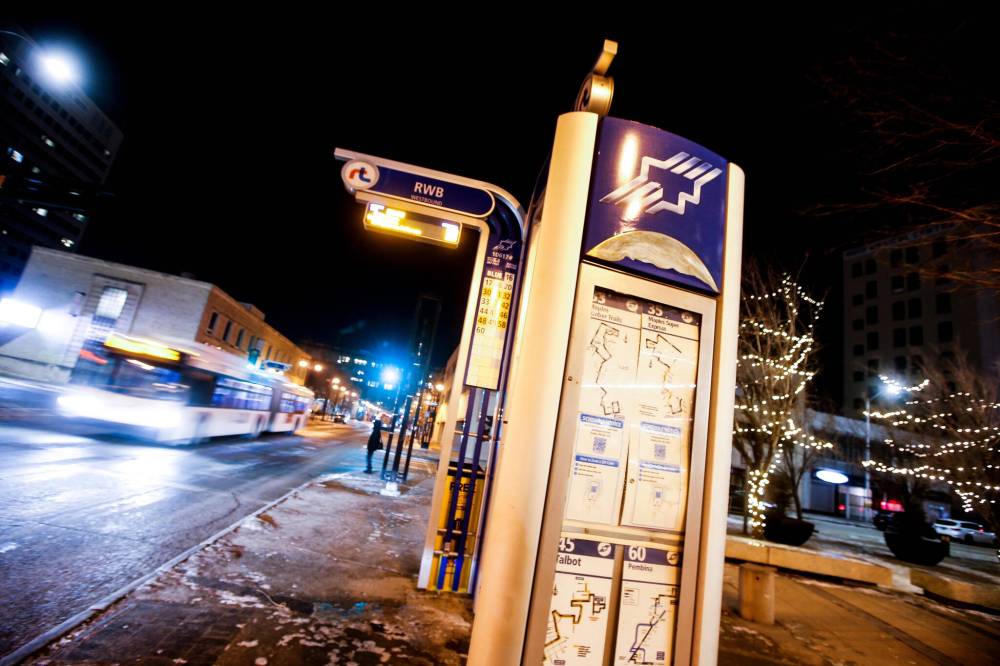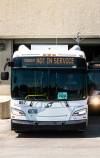City committee votes to extend on-request bus service
Advertisement
Read this article for free:
or
Already have an account? Log in here »
To continue reading, please subscribe:
Monthly Digital Subscription
$0 for the first 4 weeks*
- Enjoy unlimited reading on winnipegfreepress.com
- Read the E-Edition, our digital replica newspaper
- Access News Break, our award-winning app
- Play interactive puzzles
*No charge for 4 weeks then price increases to the regular rate of $19.00 plus GST every four weeks. Offer available to new and qualified returning subscribers only. Cancel any time.
Monthly Digital Subscription
$4.75/week*
- Enjoy unlimited reading on winnipegfreepress.com
- Read the E-Edition, our digital replica newspaper
- Access News Break, our award-winning app
- Play interactive puzzles
*Billed as $19 plus GST every four weeks. Cancel any time.
To continue reading, please subscribe:
Add Free Press access to your Brandon Sun subscription for only an additional
$1 for the first 4 weeks*
*Your next subscription payment will increase by $1.00 and you will be charged $16.99 plus GST for four weeks. After four weeks, your payment will increase to $23.99 plus GST every four weeks.
Read unlimited articles for free today:
or
Already have an account? Log in here »
A proposal to have Winnipeg Transit extend on-request service later into the night appears to be just the first small step toward more sweeping changes.
On Tuesday, council’s public works committee cast the first vote to extend service hours for 10 on-request routes, which will take effect on Dec. 14, if city council agrees.
Many Winnipeggers have complained the primary transit network, that underwent an overhaul on June 29, left them with no way home from work, school and other activities.

However, Transit officials noted the new proposal is just the first expedited step to address the problem; a more complicated change to select fixed transit routes is set to be proposed next month. That second round of changes would potentially start in April.
“The costing that we’ve been working on for the full year includes all the fixed route (changes that will be considered) as well,” said Bjorn Radstrom, Winnipeg Transit’s manager of service development.
Radstrom said the first round of on-request changes alone is expected to require about $560,000 to run from Dec. 14 to April 11.
Over a full year, those changes would require about 15 to 16 more full-time staff positions to carry out, he said.
In November, a proposal for broader fixed route changes is expected to require additional staff and will likely cost millions of dollars overall, Radstrom said.
“(We’re) still working that out… This (on-request change) is the smaller piece. This is the one that we could do quickly,” he said.
The initial on-request service changes will extend service to end just before 2 a.m. from Monday to Saturday and around 12:45 a.m. on Sunday and holidays.
AI trip-planning ill-advised
Winnipeg Transit is warning riders to avoid using artificial intelligence to plan bus trips, deeming some advice the technology provides to be “terribly” inaccurate.
Winnipeg Transit is warning riders to avoid using artificial intelligence to plan bus trips, deeming some advice the technology provides to be “terribly” inaccurate.
“It was a disaster. It was giving completely wrong information. It was telling you to take routes that haven’t existed for years. It was telling you to take routes that have never existed, or telling everybody to crowd onto the (Winnipeg Transit) Blue Line … These AI engines are not designed for this type of trip planning, but it seems like university students, and probably high school students, are using it,” said Bjorn Radstrom, Winnipeg Transit’s manager of service development.
Radstrom he’s heard anecdotally that teenagers and young adults have used ChatGPT and Google’s AI system to plan local bus trips with poor results.
“We have to do some communication very quickly so that we can get a handle on this and tell them: Don’t use AI engines for trip planning. Use Navigo, use the transit app, because otherwise you’re just going to get really bad advice,” he said.
Radstrom said his own AI test search to plan a bus trip from University of Manitoba to Bridgwater Centre initially advised him to take an on-request bus that wasn’t operating at the time. A second request suggested he transfer on a bus route that does not exist, while a third attempt selected a route that would reach the destination but was not the quickest option, he said.
Radstrom said it appears AI ride requests may be one factor leading more students than expected to travel on Winnipeg Transit’s Blue Line, which stretches from southwest Winnipeg to downtown.
“We are getting pass-ups (where full buses pass by waiting riders without pickup them up) on the Blue Line more than any other route. And, if this is contributing to it, we want to get a handle on that,” said Radstrom.
Transit plans to reach out to universities and school divisions to warn students not to use AI to plan their bus routes.
The following on-request zones will be affected: 101 South St. Vital; 102 Sage Creek–Windsor Park; 103 Northwest; 105 Meadows North; 106 Northeast; 107 Riverview–Fort Garry; 108 Westwood–Murray Park; 109 Charleswood; 111 Waverley West; and 112 Whyte Ridge–West Fort Garry.
Service currently ends around 10 p.m. on these routes, Radstrom said.
The on-request service allows riders to request a pickup from their location to a stop on the primary bus network by using the Winnipeg Transit website, app or by calling 311.
“Because the service… only picks up and drops off the people that are actually booking trips, we can cover a bigger area with one or two vehicles… So it’s a more cost-effective way (to add service),” Radstrom said.
He said an on-request bus usually arrives five to 20 minutes after a request is made.
While Winnipeg Transit has been hiring and recruiting drivers, it may initially need to increase driver overtime to expand the on-request service, Radstrom said.
The initial on-request changes were added to a public works agenda less than 24 hours before the meeting began, meaning there was little public notice.
The committee’s chairwoman said that prompt action reflects the need to quickly eliminate service gaps.
“We heard loud and clear that… we need to have the late hours, because people are working shift work.”
“I think we should be thankful that that report came in record time to proceed. It still will go to council, so there’s still time to review it,” said Coun. Janice Lukes (Waverley West).
“We heard loud and clear that… we need to have the late hours, because people are working shift work,” said Lukes.
The shift to a new primary transit network was designed to happen with no budget increase, which led previous night-time hours to initially be cut, the councillor said.
Meanwhile, the public works committee opted to delay action on a proposal to create loading zones specifically for ride-booking services to drop off and pick up clients. The idea is set to be considered next month to allow more consultation with the taxi industry.
The committee also ordered a staff report on reducing the speed limit to 30 km/h from 50 km/h on Arlington Street, between Portage and Wolseley avenues. Residents complained buses travel too quickly and there’s added congestion, noise and vibrations that shake homes.
That report is expected back in about four months.
joyanne.pursaga@freepress.mb.ca
X: @joyanne_pursaga

Joyanne is city hall reporter for the Winnipeg Free Press. A reporter since 2004, she began covering politics exclusively in 2012, writing on city hall and the Manitoba Legislature for the Winnipeg Sun before joining the Free Press in early 2020. Read more about Joyanne.
Every piece of reporting Joyanne produces is reviewed by an editing team before it is posted online or published in print — part of the Free Press‘s tradition, since 1872, of producing reliable independent journalism. Read more about Free Press’s history and mandate, and learn how our newsroom operates.
Our newsroom depends on a growing audience of readers to power our journalism. If you are not a paid reader, please consider becoming a subscriber.
Our newsroom depends on its audience of readers to power our journalism. Thank you for your support.







